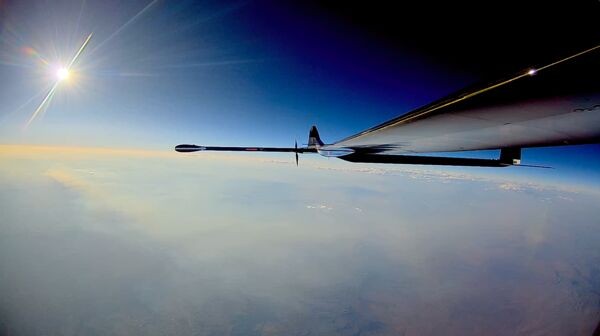
The PHASA-35 HAPS seen operating in the stratosphere during its recent milestone flight. (BAE Systems)
BAE Systems has flown the PHASA-35 solar-powered high-altitude long-endurance (HALE) unmanned aerial vehicle (UAV) in the stratosphere for the first time, the company announced on 14 July.
Speaking at the Royal International Air Tattoo (RIAT) 2023 show at Royal Air Force (RAF) Fairford in Gloucestershire, Phil Varty, business manager UAV systems, BAE Systems, said the milestone flight had recently taken place over a 24 hour period, during which the electrically driven high-altitude pseudo-satellite (HAPS) ascended to an altitude of more than 66,000 ft before landing back at Spaceport America in the US state of New Mexico.
“The flight marks a significant milestone in PHASA-35's development [which began in 2018]. Designed by BAE Systems' subsidiary Prismatic Ltd to operate above the weather and conventional air traffic, it has the potential to provide a persistent and stable platform for various uses including ultra-long endurance intelligence, surveillance, and reconnaissance, as well as security,” BAE Systems said. “[Carrying a 15 kg payload], it also has the potential to be used in the delivery of communications networks including 4G and 5G and could be used in a wide range of applications, such as disaster relief and border protection, as an alternative to traditional airborne and satellite systems.”
As noted by Varty, this milestone flight saw the PHASA-35 ascend at a rate of 1 ft/sec, passing through the troposphere where the weather could adversely impact the delicate 150 kg aircraft with its 35 m wingspan, before passing into the meteorologically stable stratosphere where it is designed to operate for months, even a year, at a time.
Looking to read the full article?
Gain unlimited access to Janes news and more...







